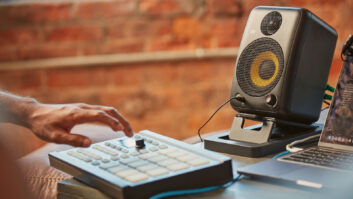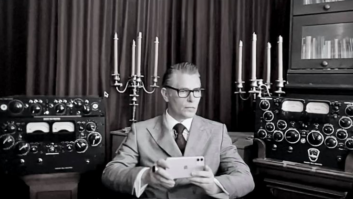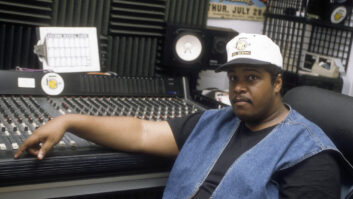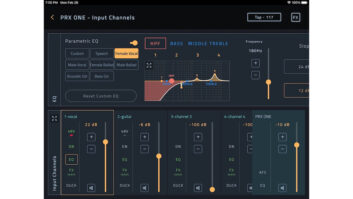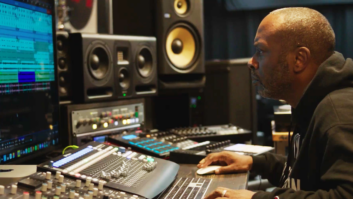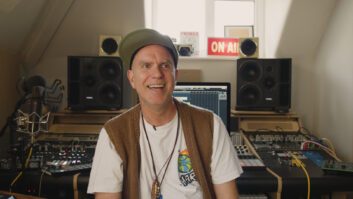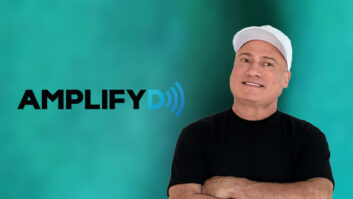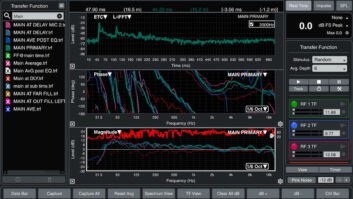Grammy-nominated SF Bay Area producer & engineer uses D-Box on multiple albums
“Everything that I’ve done this year, 2011, has been on the D-Box and it’s certainly helped on a lot of levels,” states Count. “When I plugged in the D-Box and did the first mix on the Trombone Shorty record, everything seemed a little different. It was changing how I was mixing. It allowed me to push things harder within Pro Tools, I could boost some highs or get some nastier, more present upper-mids on a vocal without them getting harsh. I could boost the lows on the kick further than I would normally be able to do before they started to sound un-clear, undefined and muddy. I was able to push things harder and further and still maintain the clarity. That was first thing I noticed about the D-Box just starting a track, EQ-ing, I thought: ‘Wow! Ok! That’s no joke. I notice a difference there.'”
Count has been refining his Mac and Pro Tools-based studio over the past few years and finally feels everything is working and sounding just like what he’s always imagined, “There are a few things that have come together in the past year or two so that I now have my way of working that allows me to get the results that top mixers used to have to spend a ton of time and money and effort using huge, elaborate setups: consoles and outboard gear that needed to get repaired and got really noisy. The critical elements for me were Dangerous Music hardware along with a few amazing companies like PSP and Sound Toys that started coming out with plugins that did what I needed them to do. The combination of those plug-ins and switching to the D-Box plus building my own control room instead of working in other studios, those were the three keys.”
But his studio is not complete quite yet, Counts is planning to expand some of his Dangerous Music gear, “My nature is to streamline things and be absolutely minimalist even if it means choosing between a piece of gear that I already own, like a Distressor, and using the plug-in version, I opt for ultimate streamline. So it’s sort of going against my nature, but I want to expand upon the D-Box and add a Dangerous 2-Bus for 16 more channels of analog summing early next year.”
On the monitoring control side of the D-Box for his older Genelec 1030’s, Count points out that it really matters when you are doing professional work, “I had an inexpensive monitor system before the D-Box. It was supposed to be a passive box that didn’t color the sound, but it wasn’t quite happening [laughs] it just wasn’t a comparable piece of gear. I encourage people to take the next step because, really, the difference between the entry level monitoring gear and the D-Box is pretty significant. I think that’s where the D-Box sort of nailed it because it’s not in that price range where it’s just out of the reach of most people. The D-box is affordable to the average engineer, yet it’s not a compromise in quality like those other pieces of gear I tried before this. With the D-Box I know what my mixes really sound like.”
“I think I’m a good person to talk to about gear because I’m not an engineer, meaning I don’t know what goes on inside the gear that I use,” says Count. “I know what sounds good, and I have good ears. All I know is what I hear. I’m not one of those people that’s going to think ‘Oh the plug-in version doesn’t sound as good as the real one’ – if sounds good I’ll use it.”
Remembering mixing with the D-Box for the first time, Count recalls, “One of the things that was very unexpected, and that I had never really considered before – with my mix in Pro Tools, summed internally, I can max out at a certain level – but when I hit the D-Box I instantly gain like 6dB just by running it through the D-Box’s the analog summing and then back into Pro Tools – because I can hit it harder. It’s just something I hadn’t really considered. And I’m not one of those guys that’s all about loudness: I actually wish everyone would just pull back a few dB on their mixes and the mastering.”
He adds, “When I go to master, that’s really where I am going to be maximizing my output. I hadn’t really considered that I’d be capturing that level in my mix before mastering. It’s just so much easier now with the D-Box to get things sounding like tracks that I’m referencing, like the Roots if I’m working on a hip-hop track for example. I used to struggle to get things as loud and gigantic, now it’s just a lot easier, I’m starting 5 or 6dB louder to begin with and I really don’t have to do that much when I’m mastering anymore. I didn’t expect that from using the D-Box summing.”
Count uses the fastest Mac Pro he can get along with Avid Pro Tools. The computers are so powerful now they handle all he can throw at them, “It’s taken so many years to get to this point where we are now, where I do a mix and I don’t have to worry about running out of processing. This is the first time that it ever happened. This is a golden era for mixers, where finally we have all the choices of plug-ins that we would ever want to have, and we don’t run out of processing. I mostly use RTAS plug-ins now, these are the first Mac Pros that have enough processing power. In order to get the sound that I wanted to get, I have to layer tons of plug-ins to sort of approximate what analog gear is doing.” Combine that power with the Dangerous analog summing and you have a hit.
As a musician, Count recorded with various engineers but never to his ultimate satisfaction, “I wanted to be in control of my sound, I didn’t want to be a producer that wasn’t also the mixer, because it just frustrated the hell out of me when engineers didn’t come up with the sound that I was looking for. I realized that I was going to have to learn all the technical aspects of mixing to get the sound that I wanted. It’s nice that finally after all those years I have a setup that works for me.”
With the abundance of independent artists wanting to record and mix albums, Count says, “It’s more important now that people are able to get the results that we used to get in the past on big expensive outboard gear, but without the cost. It’s as important as the sonic excellence that people strive for.”
Looking back and comparing his work today reveals one of Count’s secrets, the D-Box. “Ten years ago I was pushing everybody to do mixes inside the box. And people were laughing at me. When I plugged the D-Box in the first time I was very skeptical. I really just didn’t want to deal with re-setting up and configuring my control room to include a new piece of gear. But I did recognize I was struggling to achieve that upper 5 to10 percent for the mix. You can get your mix 80-90 percent there, but then to get it 100-percent there, where it really stands out and sounds better than anything else that other people are doing, that part was taking me so long. Getting mixes to100-percent was a struggle, and I had a love-hate relationship with mixing where I really didn’t enjoy it necessarily, it was a little painful, but after I mixed that Trombone Shorty record with the Dangerous D-Box, it just changed my whole outlook, I realized I was not stressed and I just enjoyed the process.” And then Count’s mixes on Trombone Shorty’s album were nominated for the “Best Contemporary Jazz Album” Grammy(r) Award for 2010.
For more information on Count visit: www.vertebraeproductions.com
About Dangerous Music
Dangerous Music, Inc. designs and builds products that are indispensable to any DAW-based recording environment. Dangerous Music electronics designer Chris Muth has spent over 20 years working in and designing custom equipment for top recording and mastering studios. Muth and company founder Bob Muller pioneered the concept of the dedicated analog summing buss for digital audio workstations with the Dangerous 2-Bus in 2001. Today the company offers a wide range of products for recording, mastering, mixing and post-production facilities, all designed and built with mastering-quality standards and a practical aesthetic. Key products include the Dangerous 2-Bus and 2-Bus LT, Dangerous Monitor ST-SR and its Additional Switching System expansion units, Dangerous D-Box, Dangerous Master, Dangerous Liaison, Dangerous Monitor and Dangerous Bax EQ.
For more information on Dangerous Music visit www.dangerousmusic.com phone 607-965-8011 or email: [email protected]
All trademarks are the property of their respective holders.
